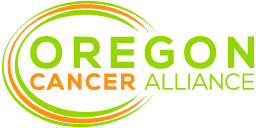Larry Sullivan spends a lot of his time these days restoring boats. It’s proved to be a much-needed distraction from his liver cancer treatment.
“The initial shock of hearing that I have a very bad diagnosis—you never expect that, you know? You always expect to have the next day,” says the former superintendent of South Lane School District.
Diagnosed in fall of 2019, Larry’s treatment began with a procedure called radioembolization, or Y90. It’s a minimally invasive procedure that allows interventional radiologists, like Dr. Donald Garbett, to directly treat tumors in the liver while avoiding damage to the surrounding tissue.
“We’re delivering radiation to the tumor itself. So, the radiation lodges into the tumor and causes it to slowly shrink,” Dr. Garbett says. “The tumor is actually dead, but what happens is it’s slowly shrinking and turning into a small scar.”
The Y90 procedure was successful at treating the tumor in Larry’s liver. His cancer, however, had already spread to his lungs and bones, so he underwent six months of chemotherapy. When that treatment stopped working, it was time for another approach — dual immunotherapy treatment, a first for liver cancer treatment. The FDA approved the combination use of drugs Yervoy and Opdivo in March 2020.
What is immunotherapy?
Immunotherapy is treatment that uses certain parts of a person’s immune system to fight diseases, such as cancer. This is achieved in two ways:
- Boosting the body’s immune system to recognize cancer as foreign and attack it.
- Uncloaking cancer cells that use “checkpoints” to hide from the immune system.
“By using Yervoy and Opdivo together, we harnessed both of those immune therapies for Mr. Sullivan and it worked pretty well,” says medical oncologist Dr. Benjamin Cho. “There are so many tools that have been developed and continue to be developed that we can use to help our patients, and that’s really exciting.”
Collaborating on behalf of patients
Many cancer patients, like Larry, will see multiple specialists from diagnosis through treatment. To help streamline that process, physicians from 13 specialty clinics in the Eugene-Springfield community work together through the Oregon Cancer Alliance. In addition to scheduling patients’ appointments between clinics, to ensure they are seen by providers in a timely manner, members of the OCA also commit to attending tumor boards, where specialists discuss individual cancer cases and collaborate on the appropriate treatment plan for each patient.
“What we have to offer in our individual specialties works hand in hand with other specialties,” says Dr. Cho. “In Mr. Sullivan’s case, we couldn’t have gotten such a great result without interventional radiology or input from our gastroenterology and surgical colleagues. It’s really important to work as a team.”
Dr. Garbett agrees. “In a town where we don’t have a large medical center, what this group of physicians has done is come together to create that same environment,” he says. “The Oregon Cancer Alliance and the tumor board function in a way that brings the patient into the center and figures out a course for them. Once that course is set, it’s really a seamless process.”
Hope for the future
For the past year and a half, Larry has received tremendous support from his wife and daughter, friends and colleagues. Having spent his career as a school psychologist and administrator, Larry sought additional resources, including an acupuncturist to help treat side effects of his cancer and a marriage and family counselor to help him handle the emotional challenges of living with the disease.
Larry is incredibly thankful for the advancements that are being made in cancer research and the people who participated in the clinical trials that led to FDA-approval of the treatments he’s receiving. Tests show Larry’s cancer continues to shrink, giving him and his family renewed optimism that he will have many more days ahead.
“I have my ups and downs every day, but I keep going. And I have a little bit of hope now with the immunotherapy working. I can actually think about doing things again, and it’s such a gift for me.”
